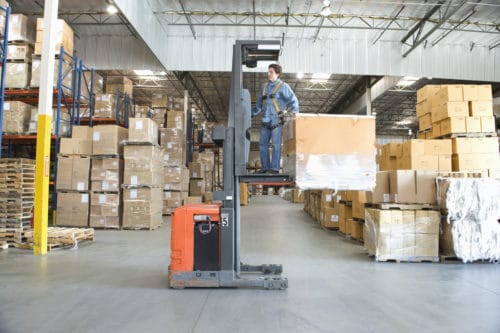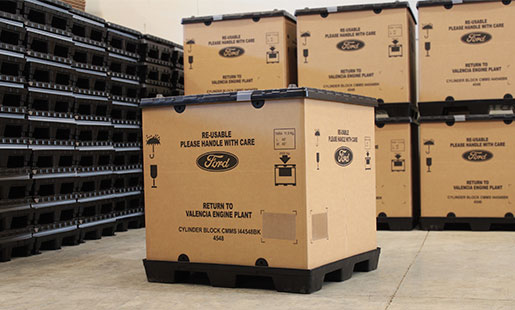Industrial Metal Packaging: Strength and Resilience in Every Design
Industrial Metal Packaging: Strength and Resilience in Every Design
Blog Article
Reliable Industrial Recycling Solutions for Sustainable Product Packaging: A Comprehensive Overview
That's where this comprehensive guide on efficient commercial recycling solutions for sustainable product packaging comes in. By checking out essential locations such as packaging product option, making for recyclability, applying recycling infrastructure, collaborating with reusing partners, and monitoring and determining recycling success, this guide will outfit you with the understanding and devices necessary to make educated decisions and drive positive modification within your company. Whether you're a product packaging expert, sustainability supervisor, or merely interested in the subject, this guide will provide beneficial insights and approaches to assist you navigate the world of sustainable product packaging.
Packaging Material Choice
The option of packaging products plays a critical function in making certain the sustainability of commercial recycling solutions. The option of products is crucial in decreasing ecological influence and maximizing reusing efficiency when it comes to lasting product packaging. Selecting the right products can assist reduce waste generation, preserve sources, and promote a round economic climate.
Materials like cardboard, paper, glass, and particular kinds of plastics can be recycled numerous times without shedding their high quality. On the other hand, products that are hard to reuse, such as non-recyclable compounds or combined plastics, can create challenges for the reusing procedure and may finish up in burners or land fills.
An additional consideration is the usage of eco-friendly and naturally degradable products. Packaging made from renewable energies, such as plant-based plastics or biopolymers, can help reduce dependence on nonrenewable fuel sources and alleviate environment change. Additionally, biodegradable products break down normally in time, lowering the buildup of waste in garbage dumps.
In addition, the weight and quantity of product packaging products ought to be lessened to lower transport prices and power intake. Light-weight materials not just call for fewer resources during production however additionally add to reduce carbon emissions throughout transportation.
Designing for Recyclability
In order to make sure the recyclability of packaging materials, thoughtful design is essential. Creating for recyclability involves developing product packaging that can be easily sorted, divided, and processed in recycling facilities. One essential element of developing for recyclability is the option of products. Product packaging developers ought to focus on the use of products that are extensively approved for recycling and have developed reusing infrastructures. Materials such as glass, aluminum, and certain types of plastic, like PET and HDPE, are frequently recycled and ought to be liked over materials that are tough or pricey to recycle.
Another important factor to consider in developing for recyclability is the removal of unneeded components or materials. By decreasing the number of layers, coverings, and additional parts, packaging can be made less complex and much easier to recycle. In addition, developers should intend to lower using combined materials, as they can complicate the reusing process.

Implementing Recycling Framework
Efficient execution of reusing infrastructure is crucial for the success of commercial recycling services. Without appropriate facilities in position, the recycling procedure ends up being inadequate and inefficient, impeding the total goal of sustainable packaging.
To apply reusing framework effectively, several essential elements require to be taken into consideration. First of all, there need to be a well-organized collection system that assists in the splitting up and collection of recyclable products. This can consist of designated reusing bins in public rooms, as well as collaborations with waste management companies for curbside pickup and sorting.
As soon as collected, the from this source recyclable products require to be moved to recycling centers in a timely way. This requires reliable logistics and transport networks, making sure that the products get to the appropriate centers immediately.
At the recycling facilities, progressed sorting and processing innovations should remain in place to divide different sorts of materials effectively. This consists of the use of automated arranging makers, optical scanners, and hand-operated sorting techniques.
Furthermore, there must be a robust market demand for recycled products. This can be attained via cooperations with suppliers and sectors that use recycled materials in their manufacturing processes. Developing a stable market for recycled materials incentivizes the recycling market and advertises the round economic situation.
Collaborating With Recycling Allies

One key element of collaborating with recycling partners is the facility of clear interaction channels. It is essential to establish open lines of interaction to assist in the exchange of info, updates, and comments. This allows both celebrations to remain informed about the development of recycling campaigns and deal with any obstacles or issues that may develop.
In addition, partnership can include joint efforts in creating and implementing recycling programs. Reusing partners can provide useful insights and guidance in creating reliable collection systems and establishing the most ideal recycling technologies. By collaborating, services and recycling companions can maximize the recycling process and decrease waste.
Moreover, collaboration can expand past the operational elements of recycling. It can likewise incorporate campaigning for and education and learning campaigns. By joining forces, businesses and reusing companions can increase recognition regarding the importance of reusing and advertise the fostering of lasting packaging techniques among consumers and other stakeholders.
Monitoring and Measuring Recycling Success
To guarantee the efficiency of industrial reusing remedies and the my link achievement of lasting product packaging objectives, it is important for organizations and their reusing companions to establish a thorough system for monitoring and determining recycling success (bulk container recycling). Gauging and tracking reusing success allows companies to assess the impact of their reusing efforts, determine areas for improvement, and established significant targets for future progress
One way to track recycling success is with the use of information collection and analysis tools. By accumulating information on the quantity of product packaging waste generated, the percentage of waste that is reused, and the sorts of materials being reused, businesses can get beneficial understandings into their recycling efficiency. This data can then be examined to determine trends, patterns, and areas of inefficiency.
An additional crucial element of tracking and measuring reusing success is developing clear and standardized metrics. This allows organizations to compare their performance against market criteria and track their development gradually. Metrics such as reusing prices, waste diversion rates, and greenhouse gas emissions can provide a measurable step of an organization's reusing success.

Verdict
Finally, executing reliable industrial recycling services for sustainable packaging calls for mindful factor to consider of product packaging material selection, making for recyclability, carrying out reusing infrastructure, collaborating with reusing companions, and tracking and determining recycling success. By including these techniques, you could try these out services can add to a much more lasting and environmentally-friendly method to product packaging, reducing waste and advertising the round economic situation.
By checking out crucial locations such as product packaging material option, developing for recyclability, carrying out reusing framework, collaborating with reusing partners, and tracking and gauging recycling success, this guide will outfit you with the understanding and devices required to make enlightened choices and drive positive change within your organization. Packaging developers need to prioritize the usage of products that are widely approved for recycling and have established reusing frameworks.Cooperation with reusing companions is vital for the successful implementation of industrial recycling options and the achievement of sustainable packaging objectives. By signing up with pressures, services and reusing companions can elevate awareness about the value of reusing and promote the fostering of lasting product packaging practices among consumers and various other stakeholders.
By collecting information on the quantity of packaging waste created, the portion of waste that is reused, and the kinds of products being recycled, organizations can get important understandings into their reusing efficiency.
Report this page